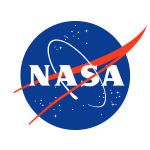Small Business Innovation Research/Small Business Tech Transfer
Wide-Field, Deep UV Raman Hyperspectral Imager
Project Description
ChemImage Sensor Systems (CISS), teaming with the University of South Carolina, proposes a revolutionary wide-field Raman hyperspectral imaging system capable of meeting the stated needs. The proposed innovation couples a spatial heterodyne spectrometer (SHS), a novel slit-less spectrometer that operates similar to Michelson interferometer, with a fiber array spectral translator (FAST) fiber array, a two-dimensional imaging fiber for hyperspectral imagery, to create a novel wide-field, high throughput Raman hyperspectral imager capable of yielding very high spectral resolution in a small form factor. The system can be configuredin both benchtop and standoff configurations. A standoff configuration is beneficial for any rover based mission, since it does not require close contact to the analyte of interest and Raman can interrogate targets up to 100 meters away.
More »
Anticipated Benefits
The wide-area, deep UV Raman hyperspectral imaging system holds great potential for many NASA applications. The proposed system specifically addresses NASA's Science Instruments, Observatories, and Sensor Systems Roadmap Technology Area 8, which stated the need for in situ sensors. The proposed system could offer in situ molecular analysis without damaging the sample, allowing for multiple measurements to be made. In addition, the roadmap states an on-going need for spectroscopy technologies for various missions to support astrophysics technology needs. The field with the most benefit for this technology will be planetary science technology, with upcoming missions that aim to characterize the surface and environments of various planetary bodies. These missions are looking for systems that can provide mineralogical analysis (8.3.4.2) and biomarker detection (8.3.4.4), which the proposed system can provide. Section 8.1.3.4 also states the need for advanced spectrometers with a focus on miniaturization. This is another feature that the proposed system can meet, since the SHS can be quite small, which was demonstrated on STS-1122. The proposed system can also be complimentary to laser induced breakdown spectroscopy (LIBS- ChemCam instrument), since the Raman system provides information on molecular bonding while LIBS provides elemental composition.
The proposed technology has potential in numerous commercial markets including quality assessment of security printing, pharmaceuticals, food, agriculture, textiles, plastics, semiconductors and even detection of certain types of cancer. This technique can be used for forensic analysis of documents, latent prints, bloodstains, and gun powder residue; clinical diagnostics such as detection of cancer, diabetes, skin disorders, and infection; pharmaceutical development; detection of illegal drug substances and hazardous materials; and much more. In addition, the technology can be utilized for the detection of chemical, biological and explosive threats. Potential users of the proposed technology include DoD military branches such as EOD teams. In addition, the DHS including the Transportation Security Administration (TSA), Customs and Border Patrol (CBP), and United States Secret Service, as well as the Federal Bureau of Investigation (FBI) Joint Terrorism Task Force (JTTF), bomb squads, and hazmat teams. State and local law enforcement can face similar threats and could also be a potential customer. More »
The proposed technology has potential in numerous commercial markets including quality assessment of security printing, pharmaceuticals, food, agriculture, textiles, plastics, semiconductors and even detection of certain types of cancer. This technique can be used for forensic analysis of documents, latent prints, bloodstains, and gun powder residue; clinical diagnostics such as detection of cancer, diabetes, skin disorders, and infection; pharmaceutical development; detection of illegal drug substances and hazardous materials; and much more. In addition, the technology can be utilized for the detection of chemical, biological and explosive threats. Potential users of the proposed technology include DoD military branches such as EOD teams. In addition, the DHS including the Transportation Security Administration (TSA), Customs and Border Patrol (CBP), and United States Secret Service, as well as the Federal Bureau of Investigation (FBI) Joint Terrorism Task Force (JTTF), bomb squads, and hazmat teams. State and local law enforcement can face similar threats and could also be a potential customer. More »
Project Library
Primary U.S. Work Locations and Key Partners
| Organizations Performing Work | Role | Type | Location |
|---|---|---|---|
| ChemImage Sensor Systems | Lead Organization | Industry | Pittsburgh, Pennsylvania |
| Jet Propulsion Laboratory (JPL) | Supporting Organization | FFRDC/UARC | Pasadena, California |
Primary U.S. Work Locations
-
California
-
Pennsylvania

Suggest an Edit
Recommend changes and additions to this project record.

